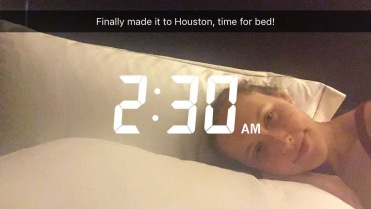Happy Wednesday!!! I have to admit, I have a love-hate relationship with the idea of Wednesday being “hump” day. On the one hand, I’m super excited that I’ve made it half-way through a week, on the other hand, I sometimes get tired thinking that I still have a few more days to go before the weekend… and the chance to sleep in!

Ready for bed after driving in for a presentation!
Sleeping is definitely something that we all like doing, but here in the hospital, sleep is often seen as something a little scary, especially if we’re talking about taking a medicine to fall asleep. At the same time, there are some people who would rather be asleep for a procedure because the idea of being awake is scary. On top of all that, the medical staff need patients to be compliant during a procedure and a sleeping patient is sometimes more compliant than an awake patient, if you know what I mean. But at the same time medically-induced sleep definitely comes with many risk factors and presents challenges that can be averted if no medication is used.
I could go on and on, but the reality is that many different factors are at work when deciding if a patient needs sedation for a procedure. In my job at the children’s hospital I will often get called to assess if a patient can hold still without medication or if then need something to help them sleep during a procedure. Recently I wrote an article on how I make that assessment for the Society for Pediatric Sedation. For those of you who are more interested in learning more about child life, I highly recommend you check out this article: Child Life 101 – Assessment. It gives a great snapshot of one role that a child life specialist has on an interdisciplinary team.
Here is the link if you want to copy and paste it in your browser!
http://www2.pedsedation.org/sections/newsletters/2017spring/childlife.html






